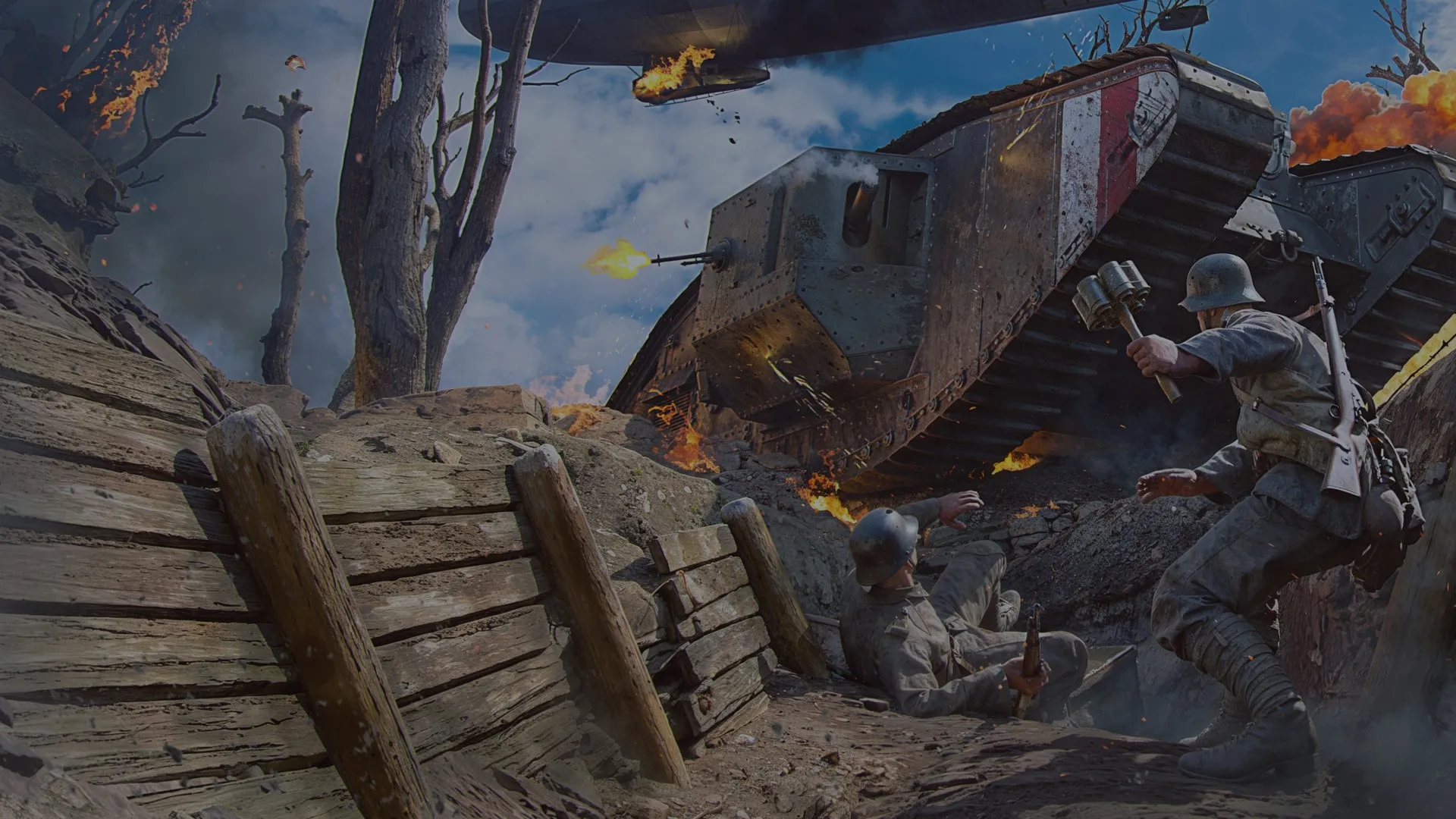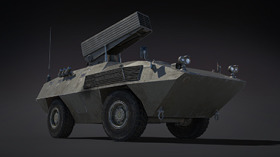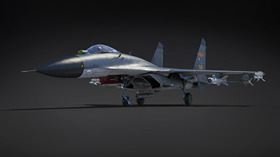
- For PC
- For MAC
- For Linux
- OS: Windows 10 (64 bit)
- Processor: Dual-Core 2.2 GHz
- Memory: 4GB
- Video Card: DirectX 11 level video card: AMD Radeon 77XX / NVIDIA GeForce GTX 660. The minimum supported resolution for the game is 720p.
- Network: Broadband Internet connection
- Hard Drive: 17 GB
- OS: Windows 10/11 (64 bit)
- Processor: Intel Core i5 or Ryzen 5 3600 and better
- Memory: 16 GB and more
- Video Card: DirectX 11 level video card or higher and drivers: Nvidia GeForce 1060 and higher, Radeon RX 570 and higher
- Network: Broadband Internet connection
- Hard Drive: 95 GB
- OS: Mac OS Big Sur 11.0 or newer
- Processor: Core i5, minimum 2.2GHz (Intel Xeon is not supported)
- Memory: 6 GB
- Video Card: Intel Iris Pro 5200 (Mac), or analog from AMD/Nvidia for Mac. Minimum supported resolution for the game is 720p with Metal support.
- Network: Broadband Internet connection
- Hard Drive: 17 GB
- OS: Mac OS Big Sur 11.0 or newer
- Processor: Core i7 (Intel Xeon is not supported)
- Memory: 8 GB
- Video Card: Radeon Vega II or higher with Metal support.
- Network: Broadband Internet connection
- Hard Drive: 95 GB
- OS: Most modern 64bit Linux distributions
- Processor: Dual-Core 2.4 GHz
- Memory: 4 GB
- Video Card: NVIDIA 660 with latest proprietary drivers (not older than 6 months) / similar AMD with latest proprietary drivers (not older than 6 months; the minimum supported resolution for the game is 720p) with Vulkan support.
- Network: Broadband Internet connection
- Hard Drive: 17 GB
- OS: Ubuntu 20.04 64bit
- Processor: Intel Core i7
- Memory: 16 GB
- Video Card: NVIDIA 1060 with latest proprietary drivers (not older than 6 months) / similar AMD (Radeon RX 570) with latest proprietary drivers (not older than 6 months) with Vulkan support.
- Network: Broadband Internet connection
- Hard Drive: 95 GB
In today’s blog, we’ll be taking a look at the J-10A, an advanced 4+ generation Chinese jet fighter developed in the late 1990s to incorporate the latest aeronautical technologies available at the time.
J-10A: A Jet Fighter for China at Rank VIII
At a glance:
- Top speed of Mach 2!
- Excellent maneuverability.
- High G load!
- Air-to-air focused arsenal.
▼
For much of the second half of the 20th century, Chinese aircraft development struggled to meet the requirements of the PLAAF due to insufficiently advanced technologies. This was only further compounded by regular and extensive budget cuts which often canceled promising projects. In the early 1980s however, funding for the development of a cutting edge fighter was approved alongside a completely new approach to its R&D process. Unlike previous projects where single design bureaus were selected beforehand, the PLAAF would set the requirements of the program and enable competition among different manufacturers to produce the best aircraft. In the end, Chengdu Aircraft’s design scored most favorably with the PLAAF, resulting in its design being picked for further development under the name “Project No. 10”.
As the program’s goal was to push technological boundaries, development advanced slowly. Nevertheless, the first aircraft was assembled in 1997 and successfully test flown the next year. Following certification, the aircraft was adopted into PLAAF service in 2005 under the official designation “J-10A”, with the production version featuring minor improvements over the prototype. The J-10 and its subsequent variants are still in production and active service with the PLAAF to this day.
Meet the J-10A!
The J-10A is amongst the most modern jet fighters currently in service with the Chinese air forces. Featuring an extremely powerful engine, excellent flight characteristics and an onboard arsenal focused around aerial combat, the J-10A will make for the perfect reinforcement to the top rank of Chinese aviation tree when it arrives in the Dance of Dragons major update. How about we take a closer look!
Somewhat resembling the Swedish JAS39 Gripen at first glance, the J-10A represents a highly advanced Chinese jet fighter, incorporating cutting edge design features such as a delta wing, actuated canards and a powerful turbofan engine. Speaking of the latter, the J-10A is powered by the AL-31FN afterburning turbofan engine, capable of quickly accelerating the aircraft up to its maximum top speed of Mach 2 at high altitudes. This, combined with the delta wing design and the use of canards, allow this aircraft to possess excellent aerodynamic qualities, especially at higher speeds. In effect, this makes the J-10A perfectly suited for intense dogfighting, likely making it become a favorite among true jet jockeys.
Interesting: A testimony to the innovative approach of the J-10A’s design was the necessity to develop around 60% of the parts from scratch.
Apart from stellar flight performance, the J-10A also has much to show for in terms of its offensive capabilities. Apart from its default twin 23 mm cannon with 200 rounds of ammunition, the J-10A also has provisions for up to 11 hardpoints. These allow it to equip a wide range of ordnance, including new to the game PL-5EII close combat missiles, very capable PL-8 missiles with good G-tolerance, as well as PL-12 ARH missiles. Additionally, this aircraft can also be outfitted with laser-guided as well as conventional bombs and rockets — Type 90-1 HEAT and high caliber Type 130-2 — enabling it to also be effectively employed in the ground attack role. Finally, a modern radar and countermeasure systems round off the J-10A’s equipment, making it an extremely versatile aircraft catering to a wide spectrum of pilots out there.
The J-10A will soon become the new top dog of the Chinese aviation tree with its arrival to the game as part of the Dance of Dragons major update! That’s this blog wrapped. In the meantime, be sure to follow the news for the latest information regarding the upcoming update. Until then, clear skies and happy hunting pilots. See you soon!
Please note that this vehicle’s characteristics may be changed before it is added to the game.










Comments (50)
Comments will be premoderatedQuick question: from what I've seen the J-10C has the fixed refueling probe, so does the previous version also have them? If not then the refueling probe should be taken off the model. Furthermore the JF-17 Blk 2 has the fixed probe, the Blk 1 doesn't.
Submit a complaint